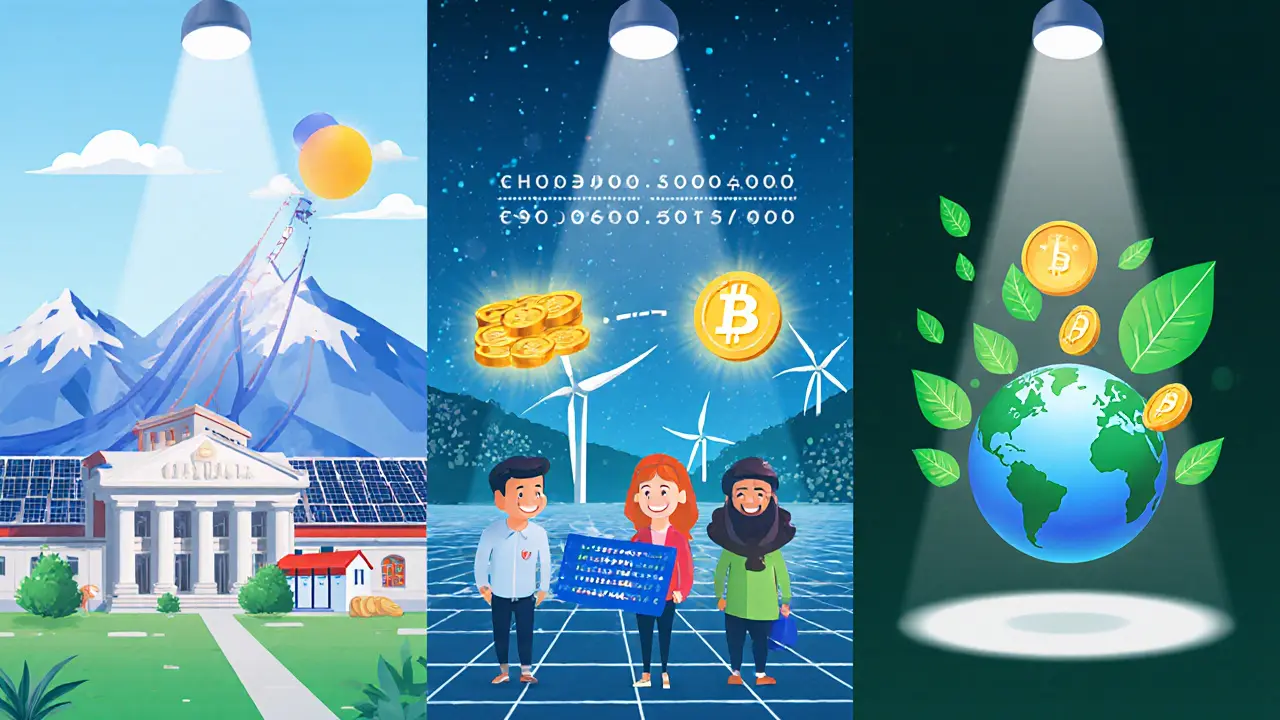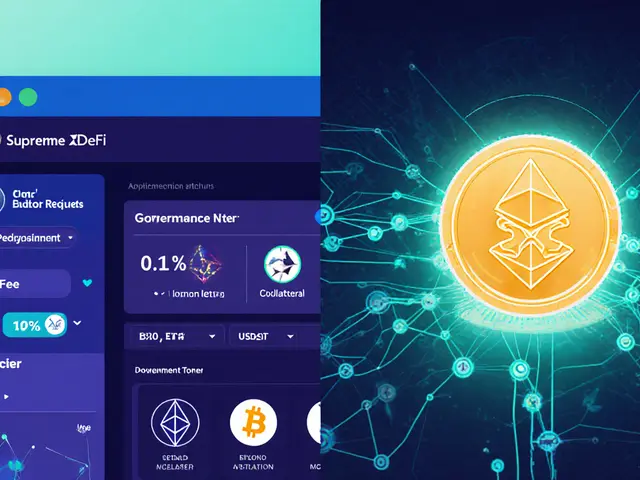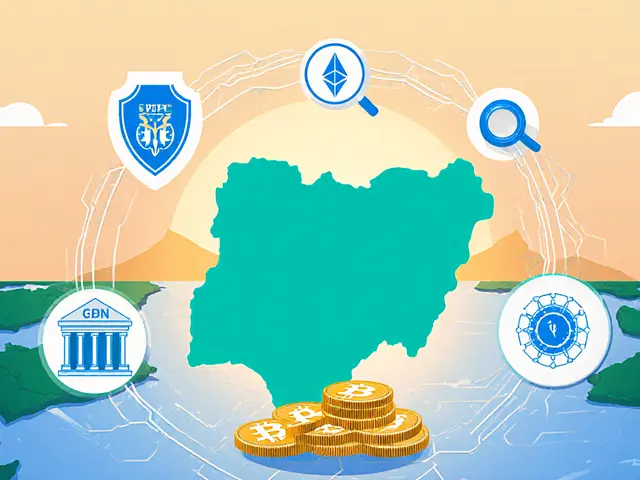- Home
- ::
- Blockchain Energy Data Management: How Distributed Ledgers Transform the Power Sector

Blockchain Energy Data Management: How Distributed Ledgers Transform the Power Sector
Blockchain Energy Impact Calculator
Estimated Blockchain Energy Data Management Benefits
Monthly Cost Savings: $0.00
Annual Cost Savings: $0.00
Audit Time Reduction: 0%
Energy Efficiency Gain: 0%
Smart Contract Automation: 0%
Data Integrity Assurance: 100%
Imagine a world where every kilowatt‑hour you generate, consume, or sell is recorded instantly, tamper‑proof, and visible to every authorized party. That’s the promise of blockchain energy data management. By swapping opaque, centralized databases for a decentralized, immutable ledger, utilities, prosumers, and regulators can finally see the whole picture in real time - and act on it.
What is Blockchain Energy Data Management?
At its core, Blockchain is a decentralized digital ledger that stores transactions in a chain of cryptographically linked blocks. When we apply this structure to the energy sector, we create a system where every data point - from meter readings to trade settlements - becomes a permanent entry that can be verified by anyone with permission.
The term Energy Data Management refers to the collection, storage, processing, and distribution of information generated by power generation, transmission, distribution, and consumption assets. Pairing it with blockchain means that the data is no longer siloed in proprietary platforms but lives on a shared, tamper‑resistant network.
Core Technical Building Blocks
Understanding the nuts and bolts helps demystify the technology and shows where you might need extra expertise.
- Distributed Ledger: A network‑wide database where each node holds a copy of the entire chain, ensuring redundancy and resistance to single‑point failures. The ledger’s immutability comes from each block’s hash linking to its predecessor.
- Smart Contract: Smart Contract is a self‑executing piece of code that runs on the blockchain, automatically enforcing agreed‑upon rules when predefined conditions are met. In energy, contracts can trigger payments the moment a solar panel feeds power into the grid.
- Consensus Mechanism: The method nodes use to agree on the next block. While Proof of Work requires miners to solve computational puzzles, consuming significant electricity, many energy projects now favor Proof of Stake selects validators based on the amount of cryptocurrency they lock up, dramatically cutting energy use.
- Hybrid Blockchain: Hybrid Blockchain combines elements of public (open) and private (permissioned) networks, offering both transparency and controlled access. This model suits energy IoT devices that need low latency but still require auditability.
- Internet of Things (IoT): Sensors, smart meters, and edge devices generate the raw data that feeds the ledger. Because many IoT nodes have limited bandwidth and power, hybrid architectures are often chosen to keep communication overhead low.
Real‑World Deployments that Show What’s Possible
Proof is always more convincing than theory. Here are three projects that have taken blockchain from pilot to production.
- Chilean National Energy Commission (CNE): In 2018, the CNE partnered with Ethereum developers to record fuel prices, compliance data, and meter readings on a public ledger. The system now lets anyone verify that reported generation matches actual output, slashing opportunities for fraud.
- EDGE (European Distributed Generation Ecosystem): This initiative aggregates rooftop solar, wind turbines, and battery storage into a flexible micro‑grid. By using smart contracts, participants can sell excess power directly to neighbors, bypassing the national utility and cutting transaction fees by up to 30%.
- Carbon Credit Tracking on the peaq Blockchain: The peaq network tokenizes carbon allowances, enabling automated settlement when a renewable asset offsets emissions. The traceability creates market confidence and accelerates the price discovery of green credits.
Each case highlights a different value driver: transparency for regulators, cost reduction for traders, and new revenue streams for prosumers.
Benefits vs. Traditional Energy Data Systems
Traditional setups rely on centralized databases owned by utilities or third‑party vendors. Those systems often suffer from data silos, delayed reporting, and costly integration projects. Below is a snapshot comparison.
| Aspect | Traditional Centralized | Blockchain‑Based |
|---|---|---|
| Data Integrity | Vulnerable to single‑point edits; audit trails often manual. | Immutable blocks; cryptographic hash guarantees tamper‑proof records. |
| Transparency | Limited to internal stakeholders; external audits are costly. | All permissioned parties can view real‑time transactions. |
| Transaction Costs | High fees for clearing, settlement, and reconciliation. | Smart contracts automate settlement; fees drop dramatically. |
| Scalability | Can handle large volumes but requires heavy IT investment. | Hybrid models balance scalability with security; still evolving. |
| Energy Consumption | Minimal direct impact; relies on existing IT infrastructure. | Proof‑of‑Work can be energy intensive; Proof‑of‑Stake or private consensus reduces footprint. |
The table makes it clear why many utilities are eyeing blockchain - especially for peer‑to‑peer trading and carbon‑credit verification.

Implementation Roadmap: From Idea to Live Network
If you’re convinced, the next step is turning concept into reality. Below is a pragmatic, twelve‑month timeline that works for most mid‑size utilities.
- Define Objectives & Scope - Identify which data streams (meter reads, DER outputs, carbon credits) will be on‑chain. Set measurable KPIs such as reduced settlement time or increased data auditability.
- Select a Blockchain Platform - Evaluate public (Ethereum, Polygon) versus permissioned (Hyperledger Fabric) or hybrid solutions. For energy‑IoT, a hybrid model often offers the best trade‑off.
- Design Architecture - Map out nodes (utility servers, DER controllers, regulator gateways), data schemas, and identity management. Each participant needs a digital identity on the ledger.
- Develop Smart Contracts - Codify business rules: payment triggers, compliance checks, and dispute resolution. Use a testnet first to catch bugs.
- Integrate IoT Devices - Connect smart meters and sensors to the blockchain via edge gateways that batch data to reduce transaction fees.
- Pilot Run - Deploy in a limited geographic zone (e.g., a small community with rooftop solar). Monitor latency, consensus performance, and user experience.
- Regulatory Alignment - Work with national energy authorities to ensure data formats and reporting meet legal standards. Keep audit logs accessible for inspectors.
- Scale Up - Gradually onboard more DERs, expand to wholesale markets, and introduce tokenized assets like renewable energy certificates.
- Ongoing Governance - Establish a consortium board (utility, regulator, consumer reps) to manage protocol upgrades and resolve disputes.
Typical budgets range from $1-3million for a regional pilot, scaling to $10million+ for national rollout, according to recent industry surveys.
Challenges and How to Mitigate Them
No technology is a silver bullet. Here are the most common hurdles and practical ways to address them.
- Energy Consumption of Consensus: Opt for Proof‑of‑Stake or permissioned consensus to keep the ledger’s carbon footprint low.
- Complexity for Non‑Tech Users: Provide a web‑based dashboard that abstracts blockchain details. Use clear visualizations of energy flows and payments.
- Interoperability with Legacy Systems: Build API bridges that translate SCADA or OMS data into ledger transactions without replacing existing infrastructure.
- Regulatory Uncertainty: Participate in industry working groups (e.g., EU Energy Blockchain Consortium) to shape emerging standards.
- Scalability Limits: Deploy side‑chains or layer‑2 solutions for high‑frequency meter data, reserving the main chain for settlement records.
Future Outlook: Where the Market Is Heading
Market analysts project the global blockchain‑in‑energy market to hit $18.6billion by 2030, a CAGR of over 45%. Several trends are fueling that growth.
- Tokenization of Energy Assets: Companies are issuing digital tokens representing kilowatt‑hours or carbon credits, enabling instant global trades.
- AI‑Driven Decision Engines: Platforms like Olas embed AI agents that pull real‑time weather, price, and demand data from the ledger to auto‑optimize DER dispatch.
- Smart City Integration: Municipal grids are embedding blockchain at the core of their micro‑grid controls, linking traffic, lighting, and building energy use.
- Regulatory Adoption: The EU’s Energy Efficiency Directive now references blockchain‑based reporting; several U.S. states are piloting blockchain for renewable certificate verification.
In short, blockchain is moving from a niche ledger experiment to a foundational layer of the next‑generation energy ecosystem.
Quick Takeaways
- Blockchain creates an immutable, shared record of every energy transaction, boosting trust and cutting intermediaries.
- Hybrid blockchains balance public transparency with private performance, ideal for IoT‑heavy energy networks.
- Real‑world pilots in Chile, Europe, and the U.S. demonstrate cost savings, new revenue streams, and regulatory compliance benefits.
- Implementation requires clear objectives, a suitable platform, smart‑contract development, and a phased rollout plan.
- Future growth will be driven by tokenized assets, AI integration, and expanding regulatory support.
Frequently Asked Questions
What exactly is a blockchain, and why does it matter for energy data?
A blockchain is a distributed ledger where each block is linked to the previous one through a cryptographic hash. Because every participant holds a copy, no single party can alter past records without detection. For energy data, this means meter readings, trade settlements, and compliance reports are permanently verifiable, eliminating fraud and simplifying audits.
How does a smart contract automate energy trading?
A smart contract encodes the rules of an energy trade - for example, "pay $0.12 per kWh when the grid price exceeds $0.10". When a sensor reports that the condition is met, the contract automatically transfers the agreed amount of cryptocurrency or token to the seller’s wallet, without human intervention.
Is blockchain energy‑intensive? How do projects avoid adding more emissions?
Proof‑of‑Work (PoW) blockchains consume a lot of electricity, but most energy‑focused deployments use Proof‑of‑Stake (PoS) or permissioned consensus algorithms that require minimal computing power. Hybrid solutions also keep high‑frequency data off the main chain, further reducing load.
What skills does my team need to launch a blockchain‑based energy platform?
You’ll need blockchain developers familiar with Solidity or Hyperledger, smart‑contract auditors, energy system architects who understand DER integration, and cybersecurity experts to protect node endpoints. Many utilities partner with specialized blockchain consultancy firms to fill gaps quickly.
Can existing IoT meters be retrofitted for blockchain use?
Yes. Edge gateways can batch sensor data, sign it with a cryptographic key, and push it to the ledger. This approach avoids costly hardware swaps while still delivering trustworthy data.


 Finance
Finance





Write a comment